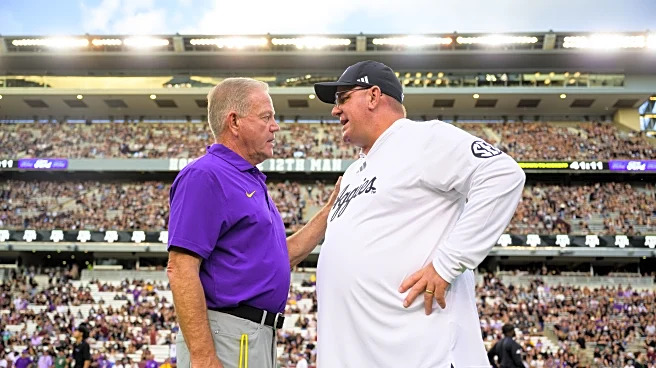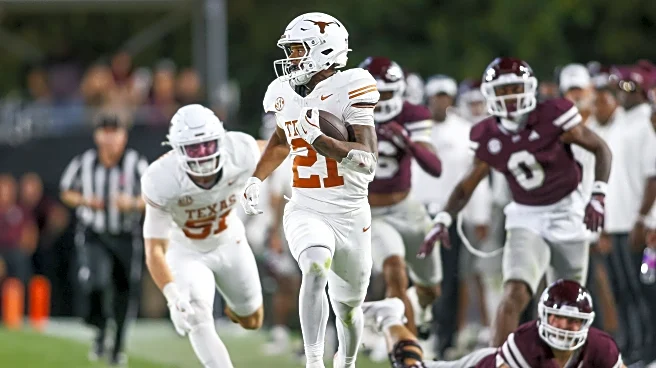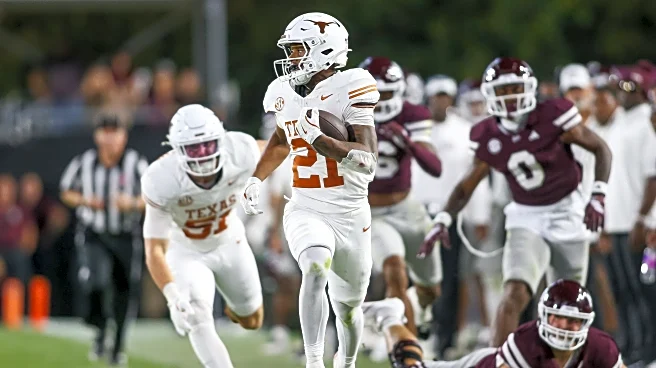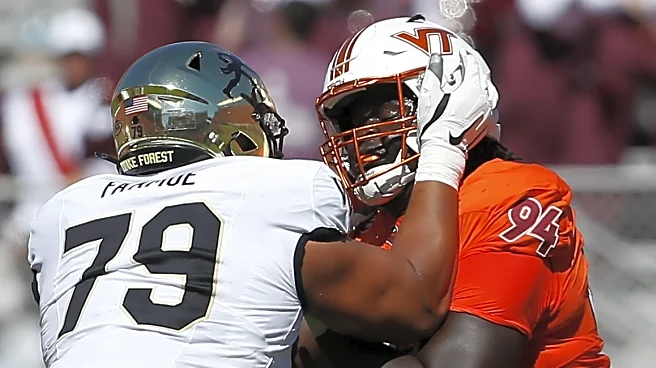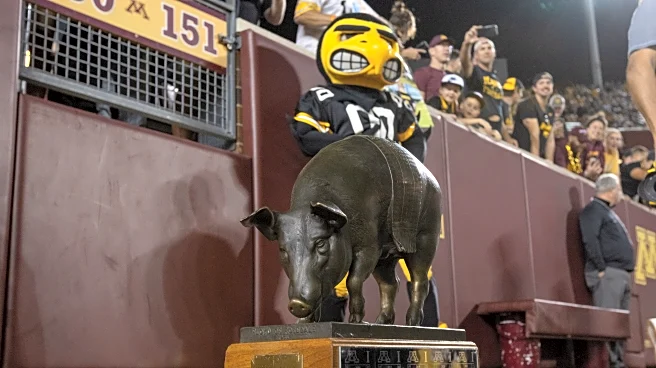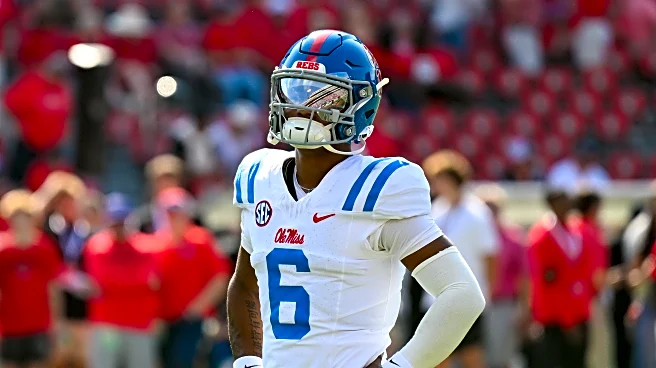What's Happening?
The Indiana Hoosiers and Vanderbilt Commodores have emerged as surprising contenders in the college football landscape, with both teams achieving significant victories. Indiana, favored by four touchdowns,
defeated UCLA with a commanding 56-6 score, while Vanderbilt secured a 17-10 win over Missouri, a team previously ranked No. 15. These results are part of a broader trend of increased parity in college football, attributed to the Name, Image, and Likeness (NIL) era, which allows players to receive compensation. The success of these teams is notable as they are now in contention for the College Football Playoff, with Indiana potentially ranking No. 1 and Vanderbilt in the top 10.
Why It's Important?
The rise of Indiana and Vanderbilt in college football underscores the shifting dynamics within the sport, driven by the NIL era. This development has leveled the playing field, allowing traditionally less dominant programs to compete at higher levels. The potential playoff berths for these teams highlight the impact of financial incentives on recruiting and team performance. This shift could lead to a more competitive and unpredictable college football landscape, challenging the dominance of historically successful programs. Stakeholders such as universities, athletes, and sponsors may need to adapt to this new environment, which could influence recruitment strategies and financial investments in college sports.
What's Next?
As the college football season progresses, the performance of Indiana and Vanderbilt will be closely monitored. Their continued success could influence future NIL policies and the overall structure of college athletics. Other programs may seek to emulate their strategies, potentially leading to further changes in recruitment and team management. The upcoming College Football Playoff Rankings will provide a clearer picture of their standings and potential playoff paths. Additionally, the response from traditional powerhouses and their adjustments to this new competitive landscape will be pivotal in shaping the future of college football.



